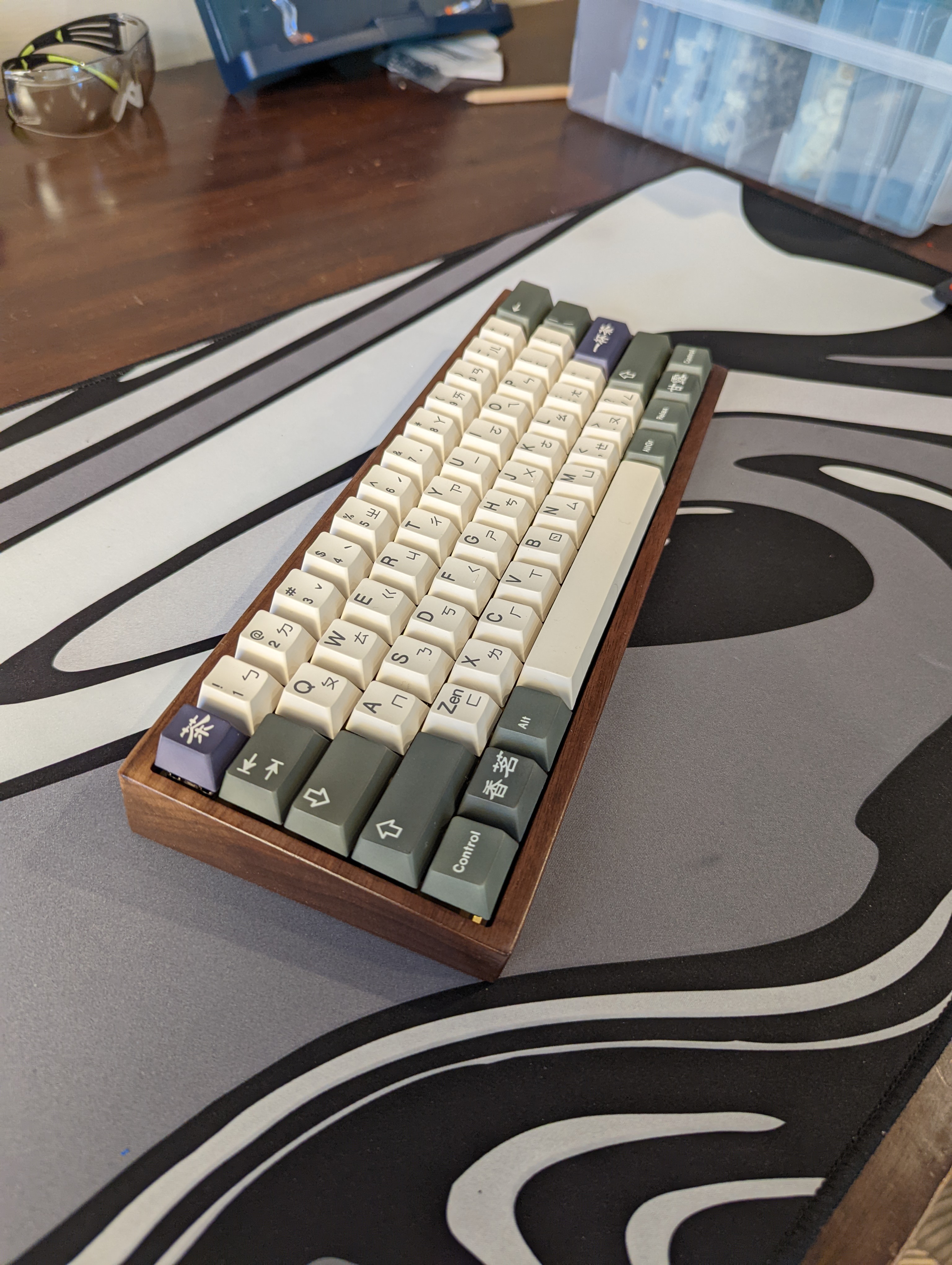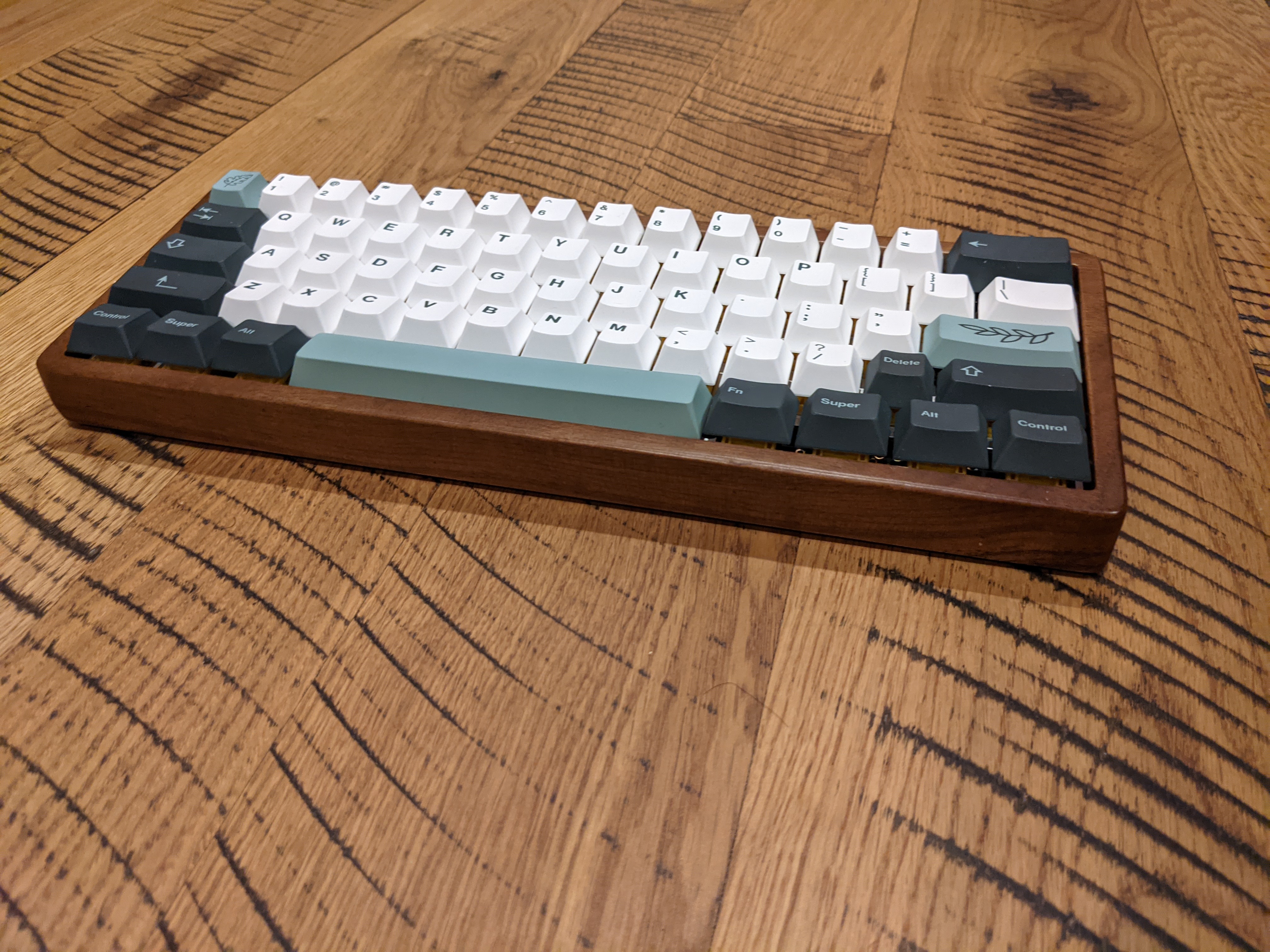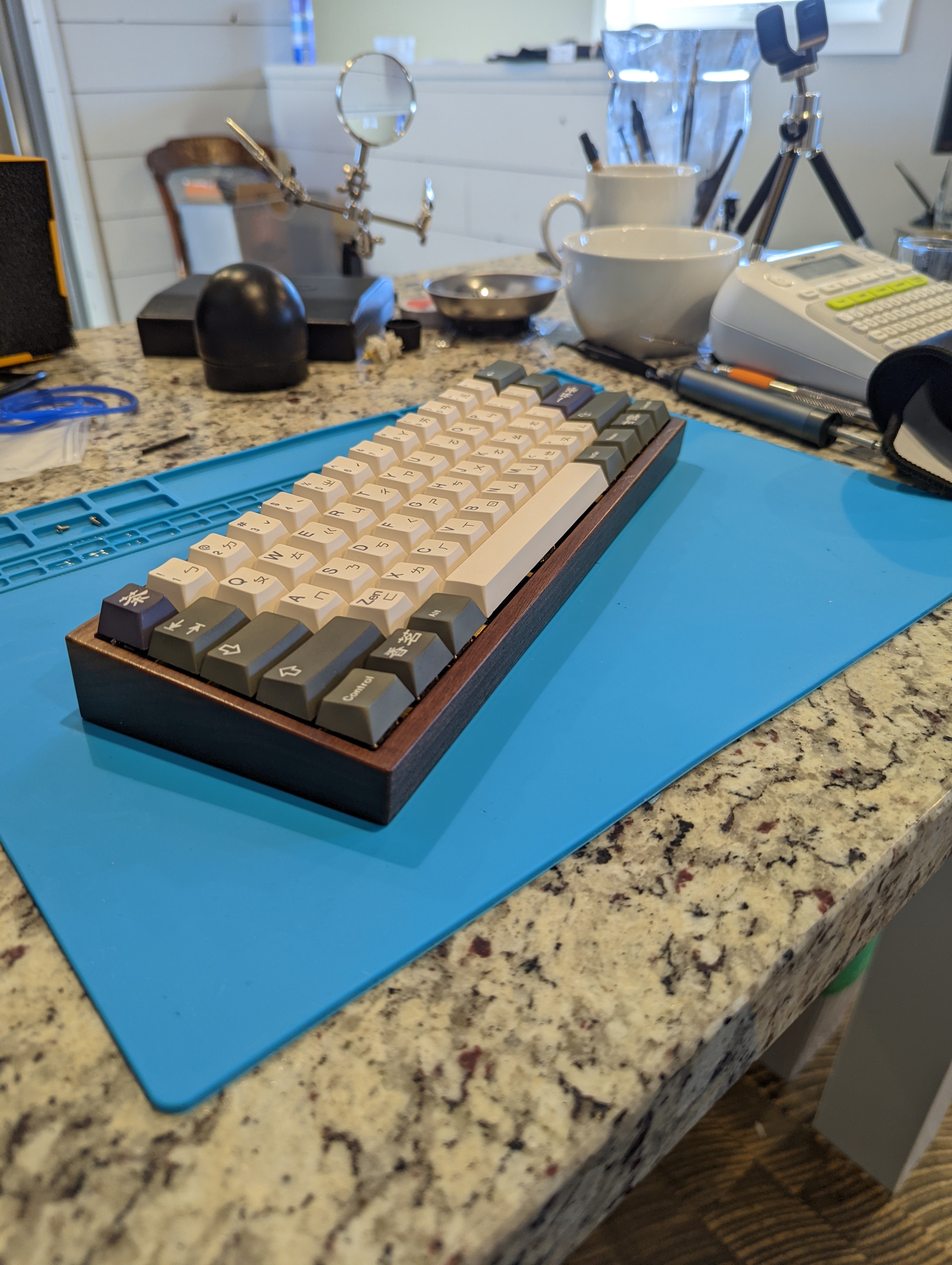20 January 2022

Last summer, I was new to the hobby and my thought was “I could design a tray mount keyboard”. It had already been done but I had a woodmaker in mind whose work would make for a beautiful keyboard. I met him in Park City, Utah. His stuff looks like this:
I had owned a wooden tray-mount for one of my first purchases in the hobby but it wasn’t anything special. It was this (see below) wooden GK-61 keyboard. A lot of my first experimenting with different PCBs, switches, plates, case materials and more, I did on tray-mount 60 percents. It was a great experience, getting to learn the ways of making a keyboard sound and feel better within the universal traymount 60. I had just recently joined the hobby at this point. I plead ignorance for the use of cloned GMK Botanical PBT keycaps… I thought it was pretty and had no idea it was a clone. It was 70 dollars after all so my thinking was it must be original! Little did I comprehend how much time and money people spend on keycaps. Late July of last year, it looked like this:

However, once I tried the Bakaneko, tray mount in the 60% form factor was spoiled for me. Instead, I decided, of building an artisan tray mount, I’d try to make one with a gummy o-ring. The idea was simple enough and I was curious enough to seek help making a prototype. Since the Bakaneko was open source, it was the perfect ready-to-go design to try some things with. With the Geekark Tea keycaps seen here, the prototype ended up looking like this:

I worked with a local woodworker to get a prototype CNC milled out of walnut. It looked a lot like my GK-61, pretty plain and uninteresting. However, with a little bit of flair with the Geekark Tea set, we had a nice looking prototype (according to myself and a few friends’ preference, though certainly not everyone’s). It sounded really interesting with the brass plate and 50a strength gummy O-ring. I was pleasantly surprised as the sound was unlike other keyboards. It makes sense, as I am not aware of any other wooden Bakaneko60 keyboards.
I tried using an FR4 plate but it didn’t quite sound how I wanted. I landed on the brass plate that I currently have in and am personally happy with in feel and sound signature. It sounds almost as good as my aluminum Bakaneko. It is certainly a unique sound. You can hear the wood, especially on the upper rows, where the wood beneath is thicker. I’m starting to have ideas about the next iteration. If you have any, feel free to email me. If you’d like to buy one of these some day, sign up for the newsletter. I promise it won’t bother you unless it’s important!
Anyway, once the design is solid, the next step is to make the first non-prototype unit with one of the wood-artists I have talked to. Some changes I have received as feedback and intend to implement eventually are raising the bezels so the switches aren’t seen and